Sharks get a bad rap, forever cast as the ocean’s ultimate villains, thanks largely to Hollywood. But let me tell you, there are plenty of other marine creatures that make sharks look like cuddly dolphins. From stealthy hunters to venomous lurkers, the ocean is full of creatures that might just make you reconsider that beach vacation. So buckle up, because here are 15 ocean creatures you should probably fear more than your neighborhood great white.
1. Box Jellyfish: The Ghostly Assassin
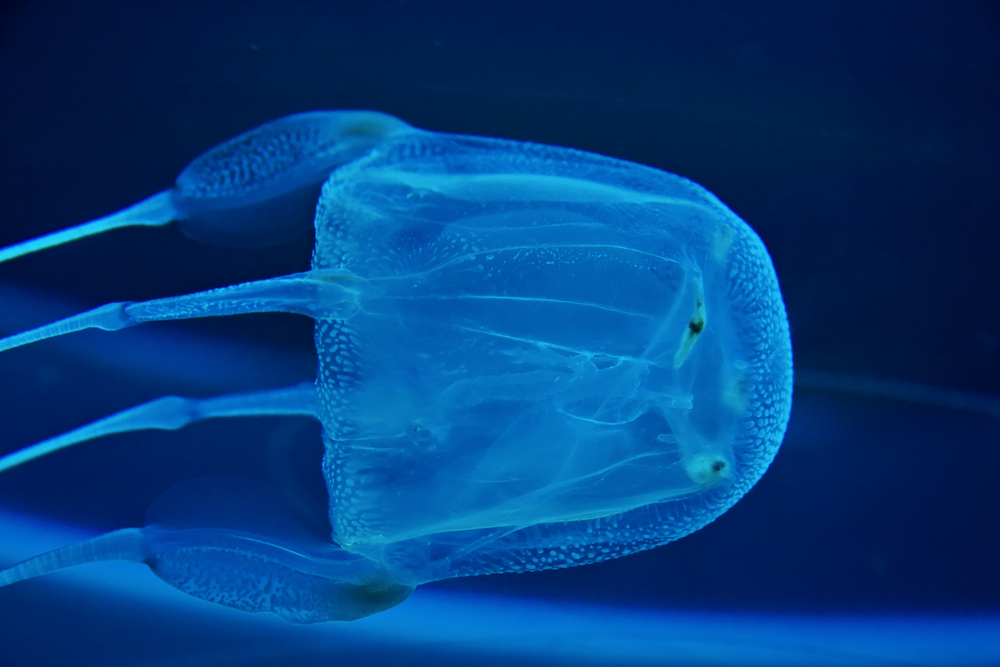
Lurking in the waters of the Indo-Pacific, the box jellyfish is a creature straight out of a horror movie, especially if you’re not fond of being zapped by Mother Nature. According to Healthline, these gelatinous blobs might look harmless, but their tentacles are armed with venom that can cause heart failure, paralysis, and even death—in minutes. Imagine swimming peacefully one moment and the next you’re in a race against time to get medical help. That’s the relentless danger of the box jellyfish. They’re practically invisible, making them even more perilous, as you won’t see them coming—until it’s too late.
These marine creatures are not just menacing due to their venom but also their speed. Unlike other jellyfish that drift with the currents, box jellies can actively swim, which means they can chase after prey—or you. And if you’re thinking that a sting couldn’t possibly be that bad, think again. Survivors often describe the pain as unbearable, akin to being branded by a red-hot iron. So, next time you’re in box jellyfish territory, remember: it’s not just a floaty blob; it’s a ghostly assassin with a deadly agenda.
2. Blue-Ringed Octopus: The Tiny Terror
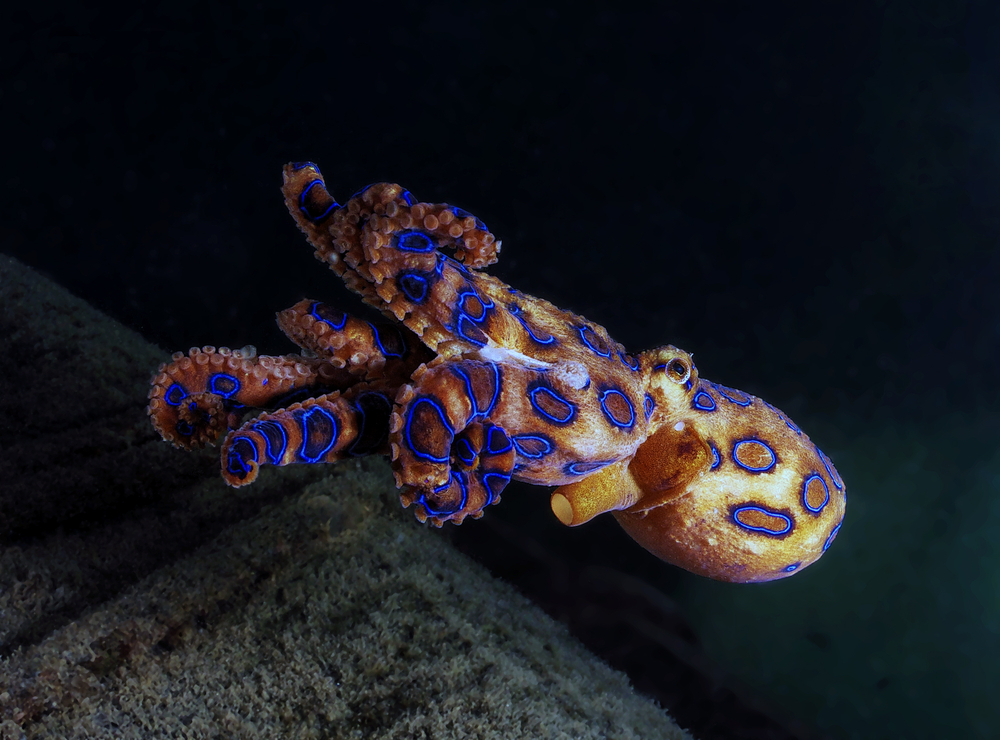
This pint-sized cephalopod might look like a tie-dye masterpiece with its vivid blue rings, but don’t let its beauty fool you. The blue-ringed octopus carries enough venom to kill 26 adult humans within minutes, and here’s the kicker—it can fit in the palm of your hand. As reported by the Natural History Museum, the blue-ringed octopus’s venom contains tetrodotoxin, which can rapidly paralyze muscles, leading to respiratory arrest.
The venom of a blue-ringed octopus can cause muscle paralysis, leading to respiratory failure, and there’s no known antidote. The best course of action is to remain calm and seek immediate medical attention, but let’s be real—staying calm isn’t exactly easy when you can’t breathe. Next time you spot a pretty little octopus on your beach walk, remember that beauty and danger often come hand in hand in the ocean world. And while sharks may be fierce, the blue-ringed octopus is a reminder that sometimes the most intimidating threats come in small packages.
3. Stonefish: The Master of Disguise
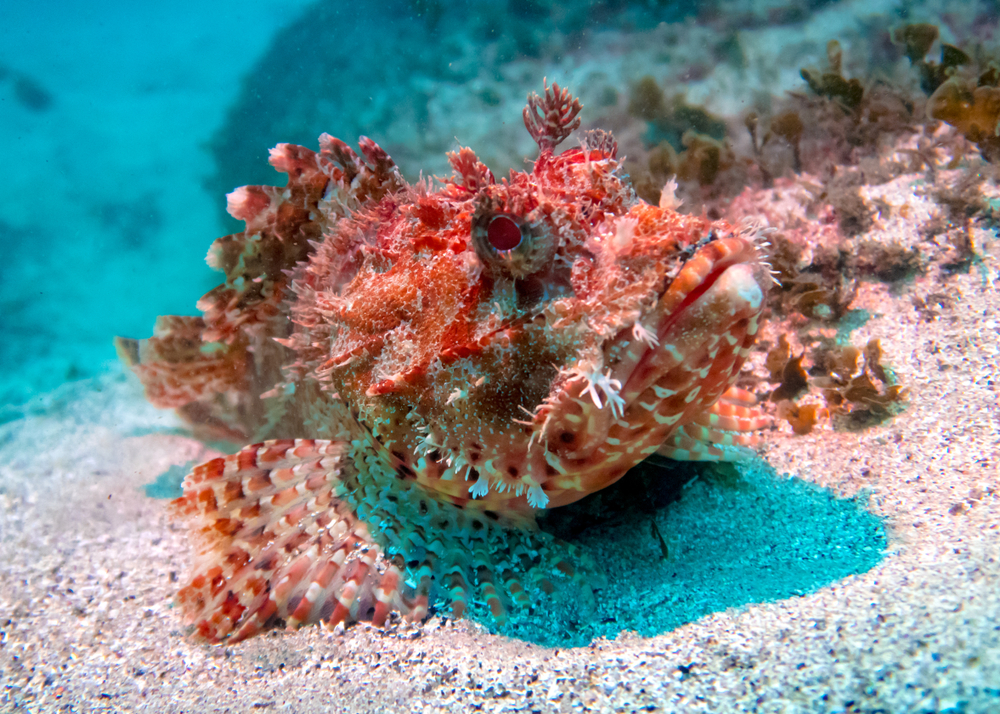
The stonefish holds the title of the world’s most venomous fish, and it’s a title it wears with invisible pride. Camouflaged perfectly to look like a rock, the stonefish can deliver an excruciating sting if you accidentally step on it. Found in the coastal regions of the Indo-Pacific, this fish isn’t aggressive, but it doesn’t need to be. Its venom is potent enough to cause severe pain, shock, and even death if left untreated.
Part of what makes the stonefish so terrifying is its stealth. You might not even notice it’s there until you feel the agonizing pain of its needle-like spines piercing your skin. The pain is said to be so intense that some victims have begged to have the affected limb amputated. So, should you find yourself wading in stonefish territory, remember the age-old advice: shuffle, don’t step. This creature proves that in the ocean, the deadliest threats are often the ones you don’t see coming.
4. Saltwater Crocodile: The Ambush Predator

Say hello to the saltwater crocodile, or “salties” as they’re affectionately (and somewhat fearfully) known in Australia. These modern-day dinosaurs are the largest reptiles on Earth, capable of growing up to 23 feet long and weighing over a ton. They’re not only massive but also incredibly aggressive and territorial, attacking with a ferocity that puts most other predators to shame. Forget about swimming in their territory without a care; you might just find yourself in a real-life Jaws remake, minus the shark.
Saltwater crocodiles are master ambush predators, lurking just below the water’s surface before striking with lightning speed. Their jaws can snap shut with a force of over 3,000 pounds per square inch, making escape nearly impossible. While sharks might bite and release, saltwater crocodiles clamp down and hold on, dragging their prey underwater. Next time you’re tempted by a scenic dip in crocodile country, remember: these creatures didn’t survive millions of years by playing nice.
5. Cone Snail: The Venomous Collector
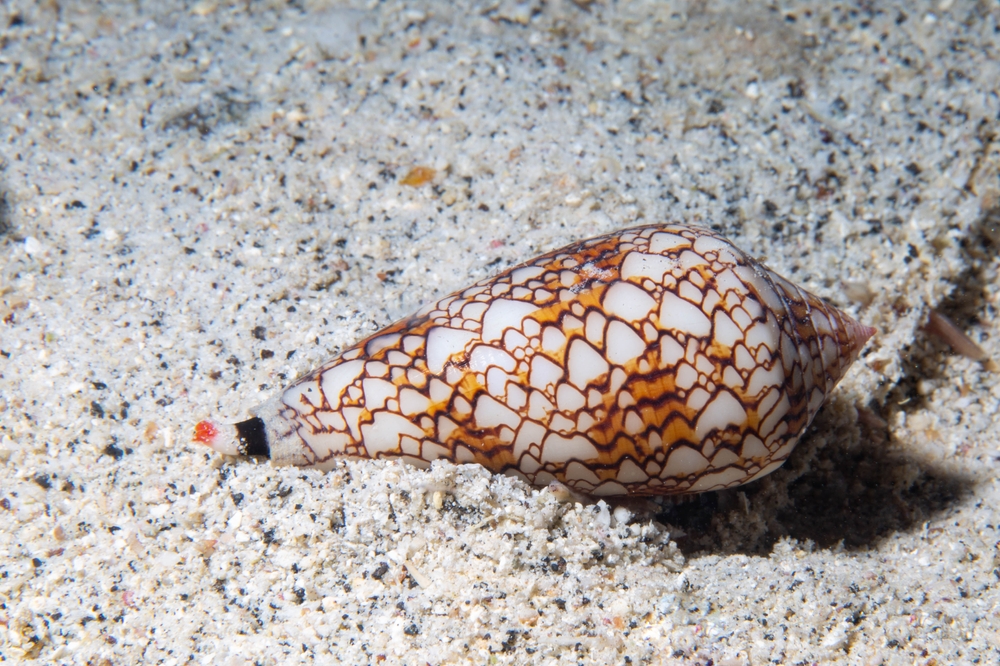
Looking at a cone snail, you might think it’s just another pretty shell for your collection. But this mollusk packs a punch with its harpoon-like tooth capable of delivering venom that can paralyze and kill. Found in warm tropical waters, cone snails are particularly dangerous because their venom is a complex cocktail that can cause everything from intense pain to respiratory failure. They’re not aggressive, but they don’t need to be—it’s enough to mistake them for an innocuous treasure of the sea.
The real danger with cone snails is their unpredictability. There’s no antivenom for a cone snail sting, and the only treatment is supportive care while the body tries to expel the toxins. Some species, like the geography cone, can even kill humans, and the scary part is they look completely unthreatening. So, the next time you’re tempted to pick up a pretty shell on your beach walk, remember that some things are best admired from afar.
6. Portuguese Man O’ War: The Floating Menace
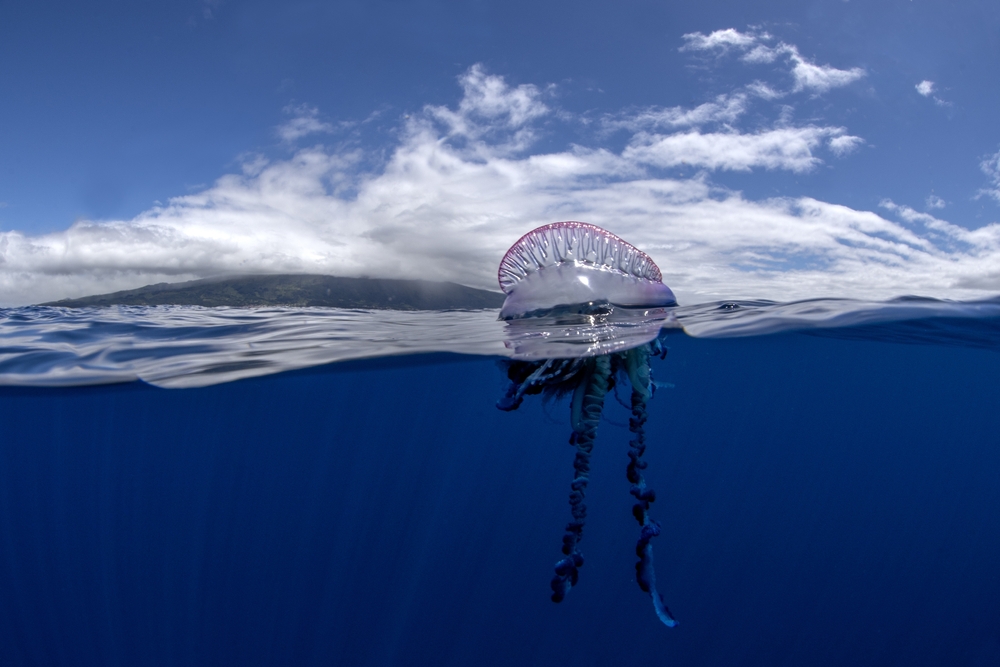
Often mistaken for a jellyfish, the Portuguese Man o’ War is actually a siphonophore—a colony of specialized polyps working together as one. With tentacles that can stretch up to 100 feet, this creature doesn’t just float about aimlessly; it packs a painful sting capable of causing welts and severe allergic reactions. Found floating in warm ocean waters, the Man o’ War is a sight to behold with its translucent blue body and pink crest. But get too close, and you’ll quickly find out why it’s best admired from a distance.
While not typically deadly to humans, the pain from a sting can be excruciating and cause severe reactions, including fever and shock. The real danger is that even a beached man o’ war can still sting long after it’s dead. So, if you see one of these on the sand, resist the urge to poke or prod. Sharks may own the reputation for being fearsome, but the Portuguese Man o’ War reminds us that sometimes the ocean’s most breathtaking creatures are also the most treacherous.
7. Lionfish: The Beautiful Invader
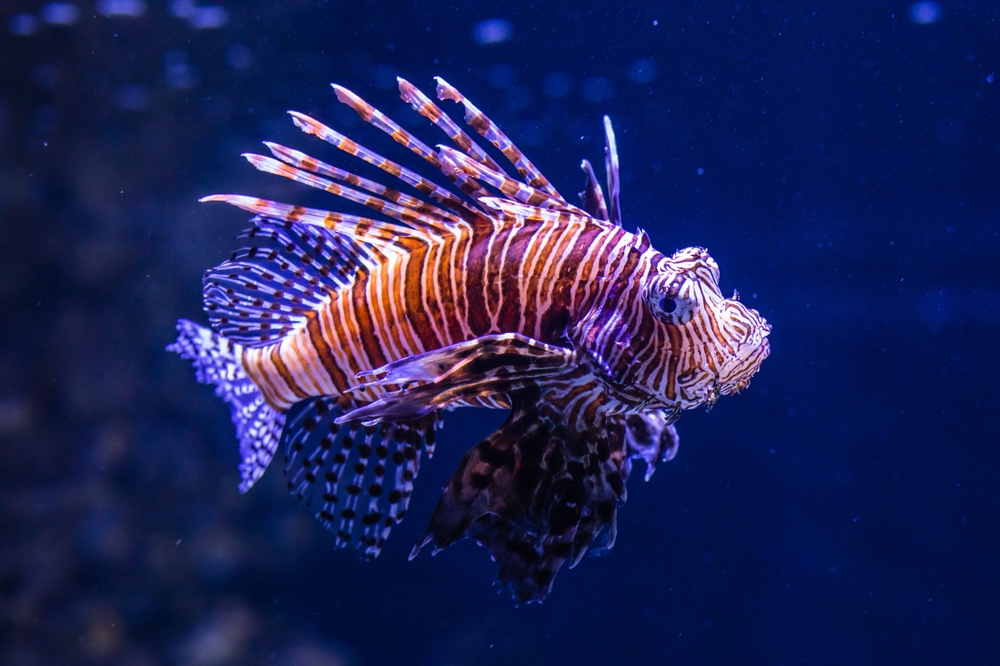
The lionfish is a striking creature with its long, flowing fins and bold stripes, but don’t let its beauty fool you. Native to the Indo-Pacific, this fish has invaded waters around the world, bringing with it venomous spines and a voracious appetite that threatens local ecosystems. Their venom can cause extreme pain, sweating, respiratory distress, and even heart failure. For a fish that looks like it should be in an aquarium, it certainly packs a formidable punch.
Lionfish are not just dangerous because of their venom; their growing populations are causing significant environmental damage. As they spread through the Atlantic, they prey on native fish and compete for resources, upsetting the ecological balance. And while they may not actively seek out humans, a careless diver can easily end up on the receiving end of those spines. So, while they may not be swimming around with menacing fin flicks, lionfish are a reminder that beauty can be deadly, and invasions come in all shapes and sizes.
8. Great Barracuda: The Flashy Predator
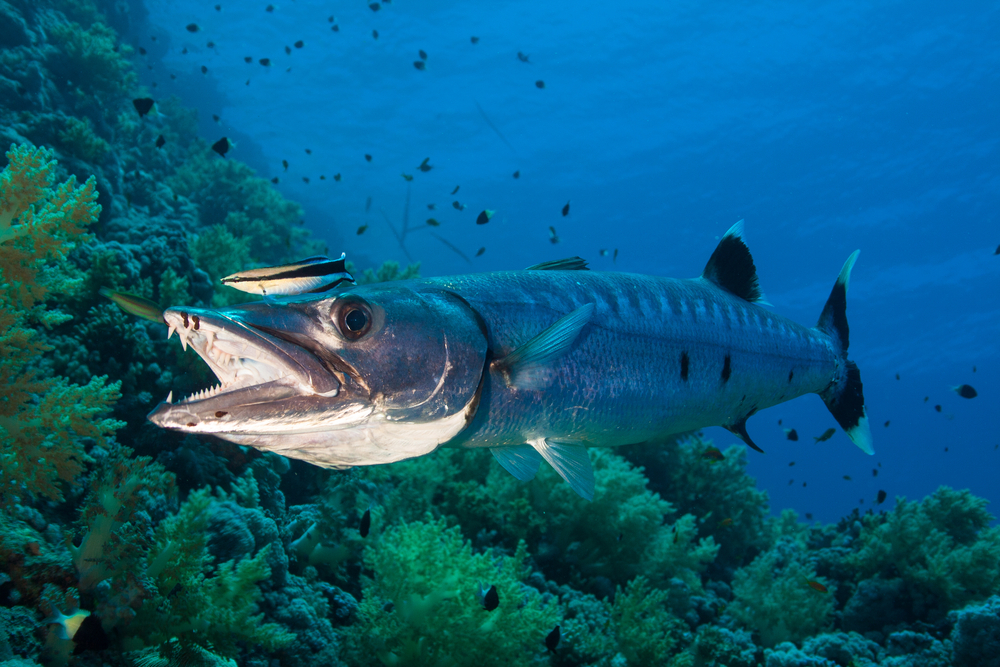
With its streamlined body and fearsome set of teeth, the great barracuda is built for speed and intimidation. Found in tropical and subtropical oceans worldwide, these fish can grow up to six feet long and are known for their curious nature, often following divers. While not typically aggressive towards humans, they have been known to attack, mistaking shiny objects for the glint of fish scales. Imagine snorkeling along peacefully and suddenly finding yourself face-to-face with this silver bullet of the sea—that’s a moment you won’t forget.
Barracudas hunt using surprise and incredible bursts of speed, capable of reaching up to 27 miles per hour. When they attack, they strike with precision, and their razor-sharp teeth can cause deep wounds. Barracudas are more of a threat to fishermen than swimmers, but respecting their space is always wise. So, the next time you’re tempted to wear bling in barracuda territory, remember: in the ocean, flashy can be fatal, and curiosity can certainly bite back.
9. Sea Snakes: The Slithering Hazard
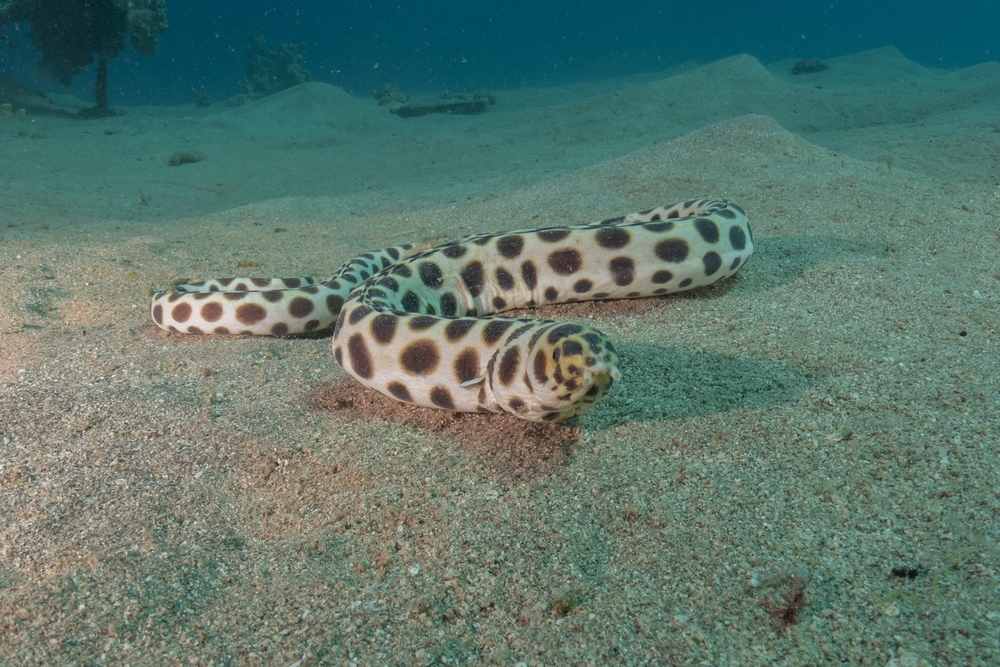
Sea snakes are often underestimated, largely because they’re not frequently encountered by humans. But these serpentine swimmers are some of the most venomous creatures on Earth—more so than many of their land-based cousins. Found in warm coastal waters of the Indian and Pacific Oceans, sea snakes can be quite shy, but their venom can cause muscle pain, spasms, and paralysis. Imagine casually snorkeling and finding a snake weaving through the waves; it’s enough to send shivers down anyone’s spine.
While sea snake bites are rare, when they do occur, they can be lethal if not treated promptly. The good news is that most sea snakes aren’t aggressive unless provoked, but it’s best to give them a wide berth. Their bite is often painless, so you might not even realize you’ve been envenomed until symptoms start to set in. In the world of ocean creatures, sea snakes remind us that sometimes the scariest threats are the ones hiding in plain sight, silently slithering through the sea.
10. Electric Eel: The Zapper of the Amazon
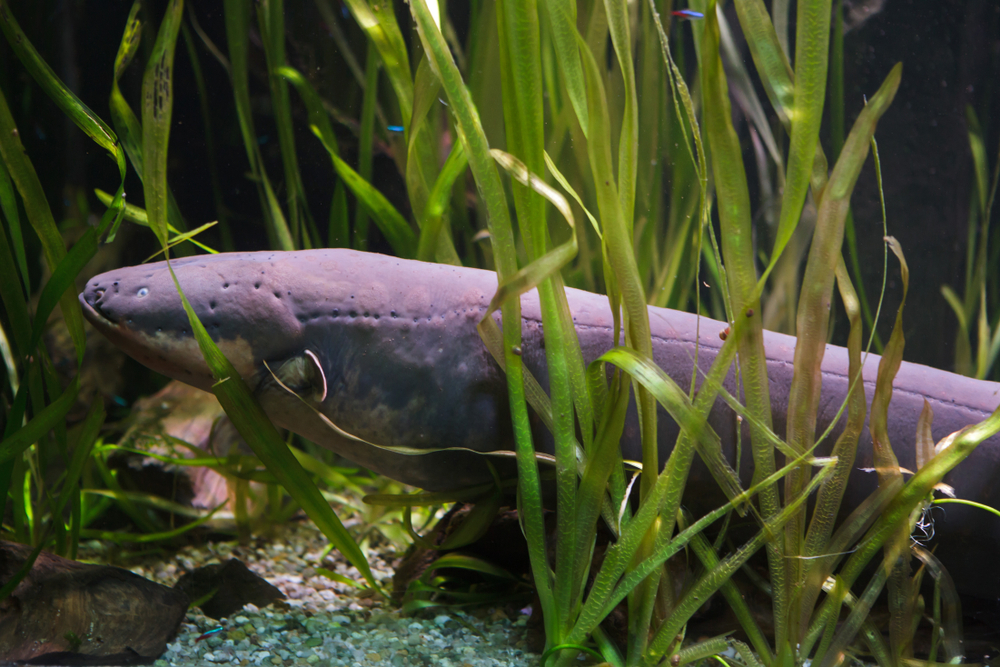
Okay, so electric eels technically aren’t ocean creatures—they’re found in the freshwaters of the Amazon Basin—but they deserve a mention due to their shocking abilities. These eels can generate up to 600 volts of electricity, enough to stun a horse. While they’re not typically dangerous to humans unless you’re in the water with them, they can pack quite a punch. Imagine swimming in a river and getting a sudden, powerful jolt; it’s an electrifying experience you definitely want to avoid.
Electric eels use their shock abilities to hunt and defend themselves, so provoking one isn’t the brightest idea. The electric charge is used to incapacitate prey, and multiple shocks can cause respiratory or heart failure in larger animals. While they aren’t usually fatal to humans, getting zapped could lead to a dangerous situation, especially if you’re swimming. So while they might not lurk in the ocean, electric eels remind us that sometimes the most bizarre creatures come equipped with nature’s own version of a taser.
11. Stingrays: The Flat Fencers
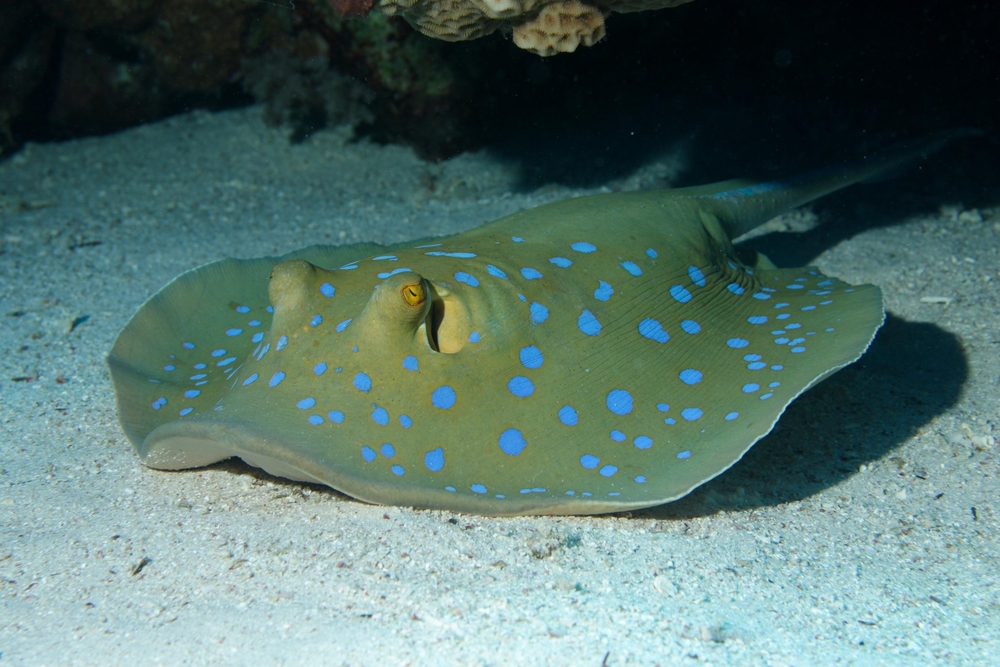
Stingrays glide gracefully along the ocean floor, looking more like underwater kites than predators. But these creatures come equipped with a sharp, venomous barb on their tail that can deliver a painful sting if stepped on or threatened. While not naturally aggressive, stingrays can cause serious injury or even death, as was famously the case with the late Steve Irwin. It’s a humbling reminder that even the most serene-looking creatures can have a hidden sting.
Encounters with stingrays are usually accidental, as they prefer to flee rather than fight. But when startled, their reflex is to lash out with their tail, which can cause deep puncture wounds and severe pain. Experts advise using the “stingray shuffle” when wading in shallow waters to avoid stepping on these camouflaged creatures. They remind us that the ocean, while beautiful and tranquil, is full of surprises, some of which are better left undisturbed.
12. Leopard Seal: The Arctic Apex Predator

When you think of seals, you might picture cute, blubbery creatures lounging on ice floes. But the leopard seal is a different story altogether. Found in the icy waters of Antarctica, these seals are formidable hunters with a taste for penguins and even other seals. With their powerful jaws and sharp teeth, they are the apex predators of their frozen realm, and they have been known to exhibit aggressive behavior towards humans.
Leopard seals are curious creatures, often approaching boats and divers. While attacks on humans are rare, they have been documented, serving as a reminder that these animals are not to be underestimated. Their agility both in water and on ice makes them formidable hunters, capable of surprising speed and stealth. So, while they may not have the same fearsome reputation as sharks, leopard seals remind us that the ocean’s icy depths are home to their own brand of terror.
13. Titan Triggerfish: The Territorial Titan
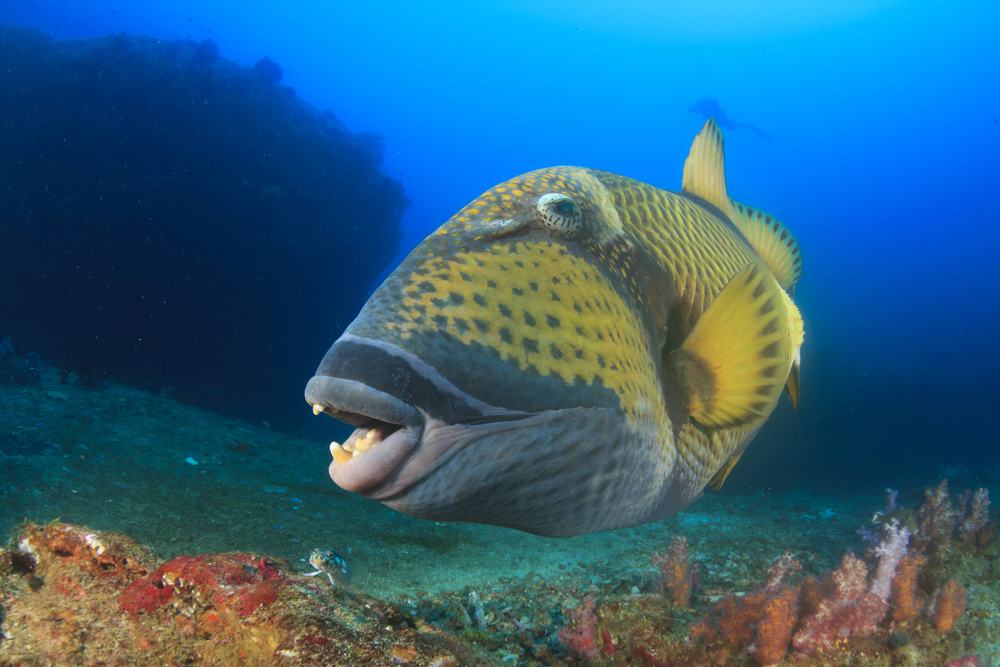
The titan triggerfish might not look menacing at first glance, with its bright colors and intricate patterns, but it has a reputation for being fiercely territorial. Found in the reefs of the Indo-Pacific, these fish have sharp teeth and a bad attitude, especially during nesting season. Divers who inadvertently wander into their territory can expect a swift and aggressive defense, complete with bites that can easily tear through wetsuits.
These fish are known to charge at intruders, with a bite strong enough to cause serious injury. A run-in with a titan triggerfish can turn an otherwise peaceful dive into a frenzied retreat. While they don’t pose a lethal threat, the potential for injury is high, making them one of the more unpredictable dangers of the reef. They remind us that even in the colorful world of coral reefs, nature isn’t always as idyllic as it seems.
14. Giant Squid: The Deep Sea Enigma
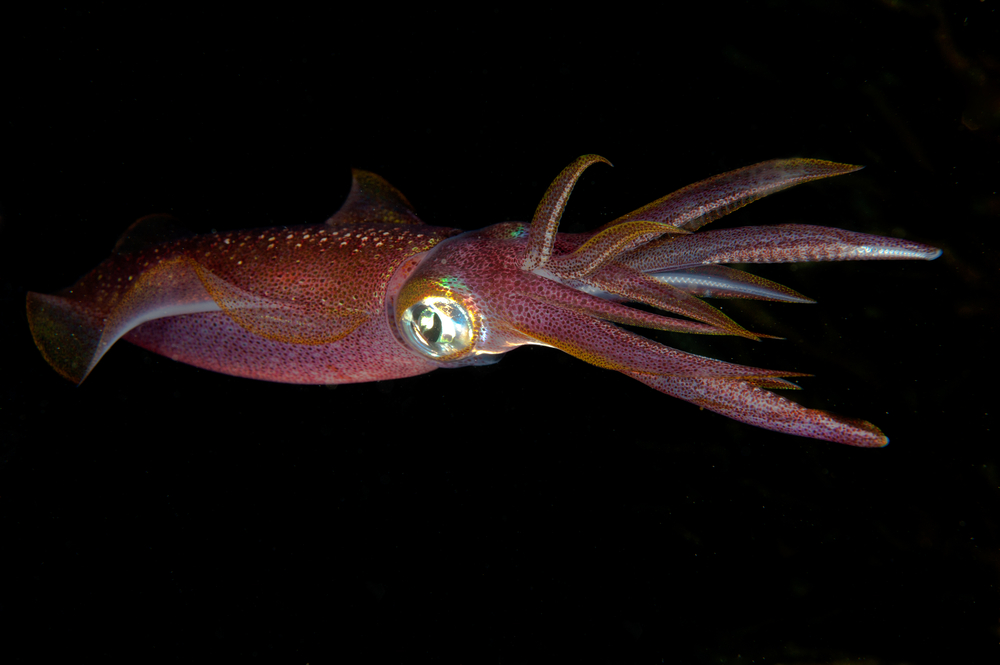
The giant squid is one of the ocean’s most mysterious inhabitants, dwelling in the deep, dark waters of the world’s oceans. While human encounters are incredibly rare, these creatures can grow up to 43 feet long, and their sheer size and strength make them formidable. Equipped with tentacles lined with sharp suckers, they’re a living reminder of how little we understand about the ocean’s unexplored depths.
Giant squids are elusive creatures, often only seen when they wash ashore or are caught in fishing nets. Their rarity has sparked countless myths and legends, painting them as monstrous sea creatures capable of dragging ships to their doom. While they aren’t actively a threat to humans, their mysterious nature and sheer size make them a compelling, if intimidating, part of the ocean’s ecosystem. So, even if you’re not likely to meet one, the giant squid is a reminder of the ocean’s boundless mysteries and the creatures that inhabit its depths.
15. Pufferfish: The Cute Yet Deadly Delight
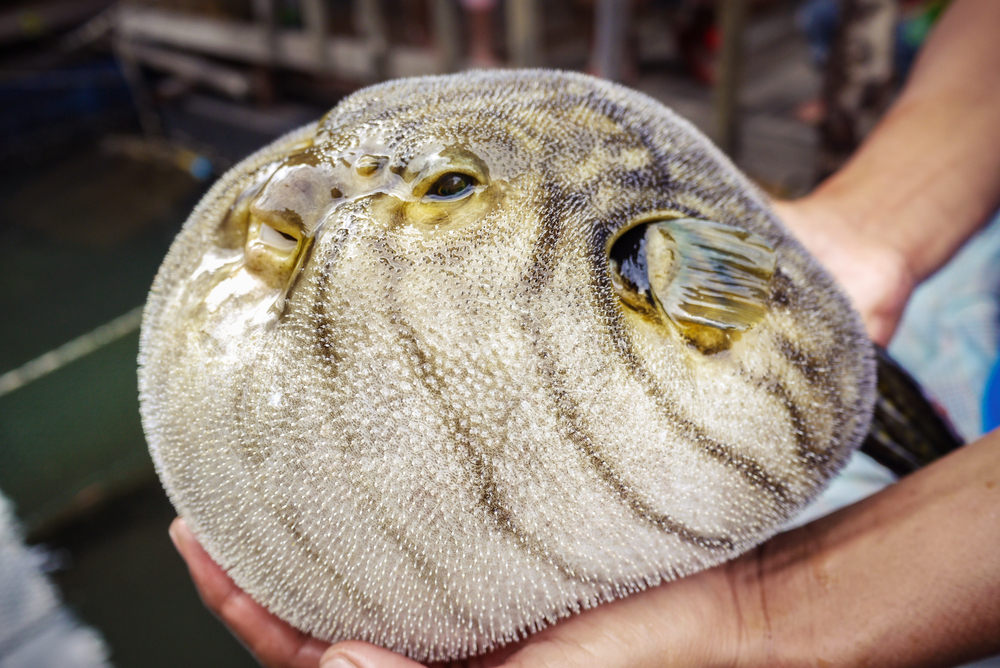
Last but certainly not least, the pufferfish, with its adorable, rotund form, is both a culinary delicacy and a deadly hazard. When threatened, these fish inflate to several times their normal size to deter predators. But their real defense mechanism is a potent neurotoxin called tetrodotoxin, found in their organs and skin, which is 1,200 times more toxic than cyanide. A single pufferfish carries enough toxin to kill 30 adult humans, with no known antidote.
Despite the risk, pufferfish is considered a delicacy in some cultures, known as fugu in Japan, prepared by licensed chefs who know which parts are safe to eat. But even the slightest mistake can be fatal, making dining on pufferfish a risky endeavor. So, while they may not pose much threat in the wild, their potential for danger lies in their allure as a forbidden food. They serve as a reminder that in the ocean, even the cutest creatures can pack the deadliest punch.
